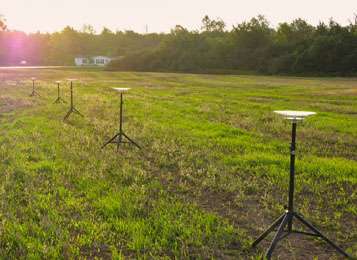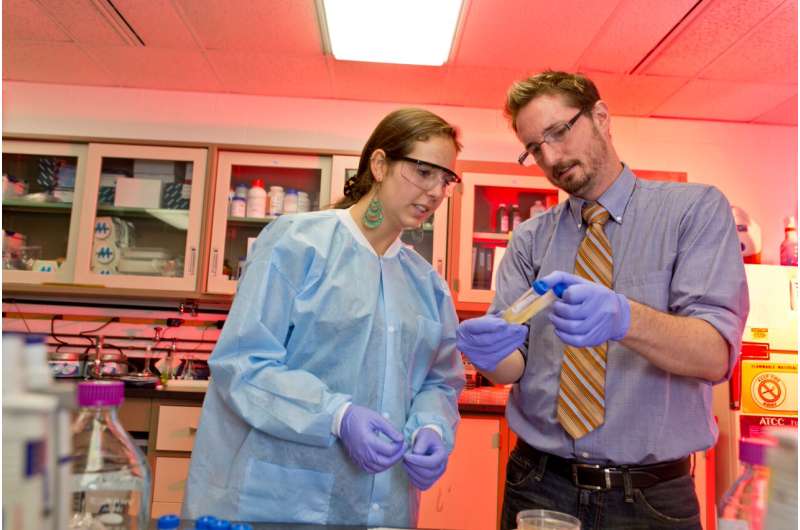Downwind safety on the farm

Consumers don't buy leafy greens and other healthy supermarket produce anticipating the food might make their families sick. Or at least, they didn't used to.
But high profile recalls of fruits and veggies seem to be a new normal in the American food landscape. The recalls follow outbreaks of foodborne illnesses caused by microbes like E. coli. These outbreaks can send unsuspecting veggiephiles rushing to the nearest toilet or, worse yet, the hospital. Some outbreaks can even result in deaths.
The average American is still unlikely to wind up at the emergency room after eating tainted produce. Still, outbreaks have major consequences for supermarkets and growers. After outbreaks, they must regain public trust or face possible financial ruin.
Of concern is how nearby farming practices can taint produce with bacteria. This can happen when farmers apply animal manure to fields near fresh produce. Tiny particles, including bacteria, may go airborne and drift to nearby fields. But scientists weren't sure just how likely microbes can travel from manure application sites to downwind produce.
That is, until now. New field research out of Clarkson University in upstate New York is providing an answer. Shane Rogers, an associate professor of civil and environmental engineering, led a research team that looked into the issue. They measured how far common bacteria, including Salmonella and E. coli, are likely to travel downwind from manure application sites. They hoped to better understand how fresh produce might be contaminated by nearby animal agriculture practices.

"Our goal was to provide a logical framework to study this pathway," Rogers said. This helped them make science-based recommendations for setback distances that protect human health.
The team used field data to understand how these bacteria travel from manure application sites to produce. The research lasted three years. They took samples at several distances from manure application sites and measured the presence of illness-causing bacteria.
The researchers used computer models to expand their understanding. "It is not possible to obtain measurements for every possible set of circumstances that may exist," Rogers said. "The models allow us to predict produce contamination over a larger range of probable conditions than our raw measurements would provide." These include the type of manure, the terrain of the farm, and weather conditions at the time the manure is applied.
The team also evaluated the risk of illness. This gave the team a better understanding of how likely someone is to get sick from produce when a certain amount of bacteria is present.
Combining all that data, the team found that produce fields should be set back from areas of manure application by at least 160 meters. That distance should help lower the risk of foodborne illness to acceptable levels (1 in 10,000).
Rogers emphasized that the advice is for a minimum setback. "(160 meters is) the minimum distance that produce growers should maintain between manure application activities and produce growing areas," Rogers said. Additional distance and delay between manure application and harvest would provide further protection.
More information: Michael A. Jahne et al. Bioaerosol Deposition to Food Crops near Manure Application: Quantitative Microbial Risk Assessment, Journal of Environment Quality (2016). DOI: 10.2134/jeq2015.04.0187
Provided by American Society of Agronomy
















